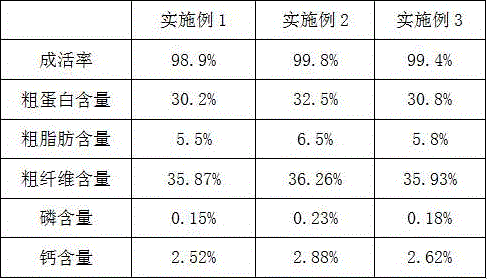Method for collecting rainwater by use of vermiculite water storage layer and application thereof in saline-alkali land improvement
A technology for collecting rainwater and aquifers, applied in applications, land preparation methods, drinking water devices, etc. obvious problems, to achieve the effect of reducing soil erosion, improving water storage capacity, and reducing the amount of soil erosion
- Summary
- Abstract
- Description
- Claims
- Application Information
AI Technical Summary
Problems solved by technology
Method used
Image
Examples
Embodiment 1
[0031] Embodiment 1 A kind of method adopting vermiculite aquifer to collect rainwater
[0032] Step 1 deep plowing
[0033] Before planting, plow the land 50-55cm deep, break up the soil clods, and rake them finely.
[0034] Step 2 Excavate the original soil
[0035] Dig out the original soil in the planting area to a depth of 50-55cm. After digging out the original soil, compact the bottom.
[0036] Step 3 laying the aquifer
[0037] Lay a fine sand layer at the bottom of the soil tank after the original soil is excavated, the thickness of the fine sand layer is 10cm, and the particle size of the fine sand is 2-2.5mm.
[0038] Lay the aquifer above the fine sand layer, the thickness of the aquifer is 25cm, and the raw material of the aquifer, in parts by weight, includes the following components:
[0039] 50 parts of vermiculite, 18 parts of pine bark, 30 parts of reed stone, 6 parts of corncob powder, 3.5 parts of pine bark, 5 parts of corn cob powder, 10 parts of starc...
Embodiment 2
[0048] Embodiment 2 A kind of method adopting vermiculite aquifer to collect rainwater
[0049] Carry out according to the method for embodiment 1, only change " laying aquifer " step, carry out embodiment 2; " laying aquifer " step of embodiment 2:
[0050] Lay a fine sand layer at the bottom of the soil tank after the original soil is excavated, the thickness of the fine sand layer is 10cm, and the particle size of the fine sand is 2-2.5mm.
[0051] Lay the aquifer above the fine sand layer, the thickness of the aquifer is 30cm, and the raw material of the aquifer, in parts by weight, includes the following components:
[0052] Vermiculite 56.5 parts, pine bark stone 20 parts, reed stone 35 parts, corn cob powder 8 parts, pine bark 5 parts, corn cob powder 6.5 parts, starch grafted sodium acrylate 12 parts, cocamidopropyl amine oxide 11 parts 14 parts of deer marsh soil, 10.5 parts of expanded perlite;
[0053] The vermiculite: the particle size is 0.5-0.6mm, the hardness ...
Embodiment 3
[0058] Embodiment 3 A kind of method adopting vermiculite aquifer to collect rainwater
[0059] Carry out according to the method for embodiment 1, only change " laying aquifer " step, carry out embodiment 3; The " laying aquifer " step of embodiment 3:
[0060] Lay a fine sand layer at the bottom of the soil tank after the original soil is excavated, the thickness of the fine sand layer is 10cm, and the particle size of the fine sand is 2-2.5mm.
[0061] Lay the aquifer above the fine sand layer, the thickness of the aquifer is 35cm, and the raw material of the aquifer, in parts by weight, includes the following components:
[0062] 58 parts of vermiculite, 22 parts of pine bark, 40 parts of reed stone, 10 parts of corncob powder, 6.5 parts of pine bark, 8 parts of corn cob powder, 14 parts of starch grafted sodium acrylate, 12 parts of cocamidopropylamine oxide 15 parts of deer marsh soil, 12 parts of expanded perlite;
[0063] The vermiculite: the particle size is 0.5-0.6...
PUM
 Login to View More
Login to View More Abstract
Description
Claims
Application Information
 Login to View More
Login to View More - R&D
- Intellectual Property
- Life Sciences
- Materials
- Tech Scout
- Unparalleled Data Quality
- Higher Quality Content
- 60% Fewer Hallucinations
Browse by: Latest US Patents, China's latest patents, Technical Efficacy Thesaurus, Application Domain, Technology Topic, Popular Technical Reports.
© 2025 PatSnap. All rights reserved.Legal|Privacy policy|Modern Slavery Act Transparency Statement|Sitemap|About US| Contact US: help@patsnap.com


